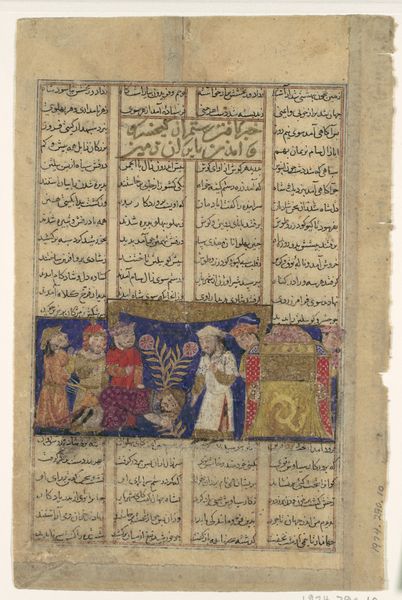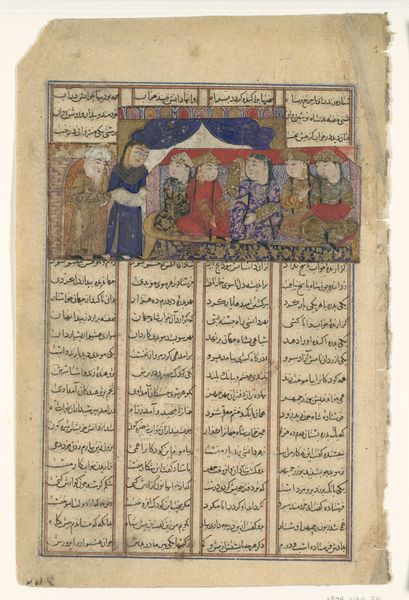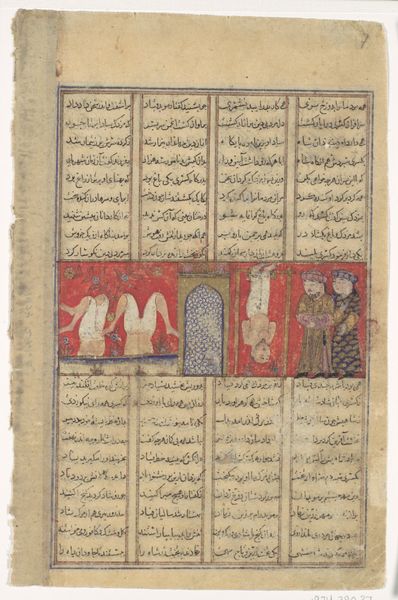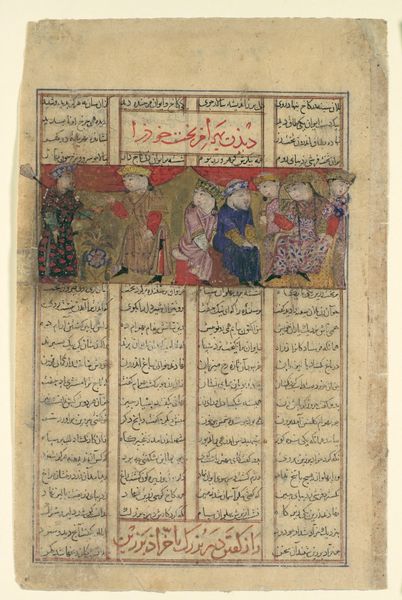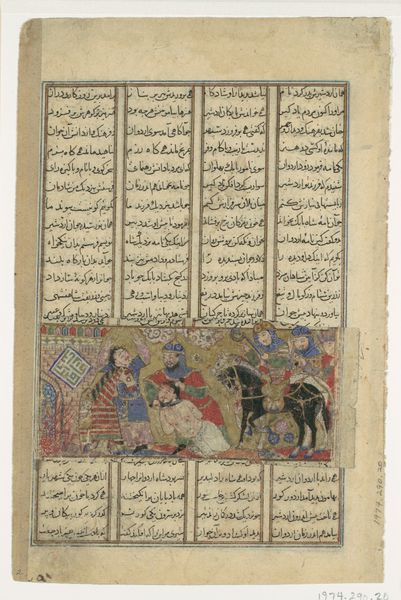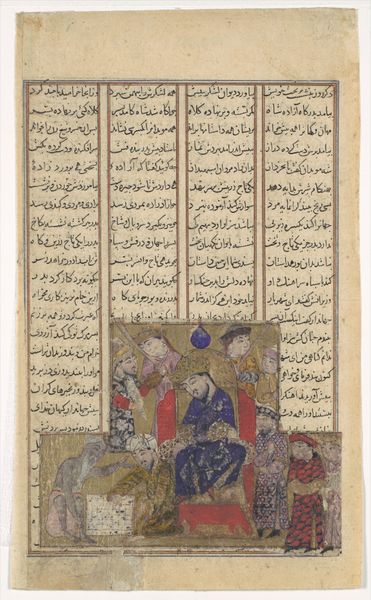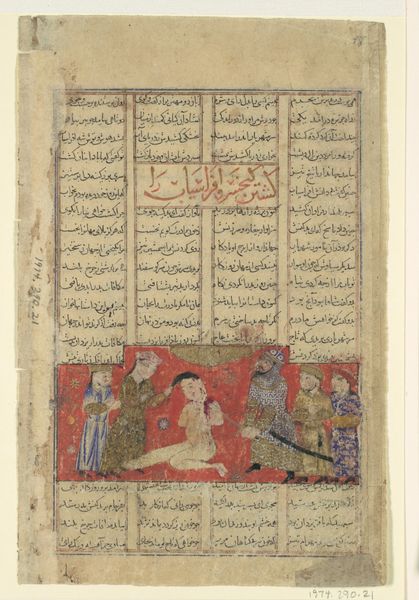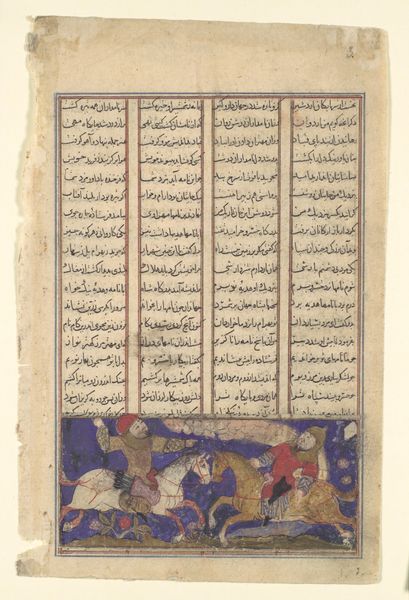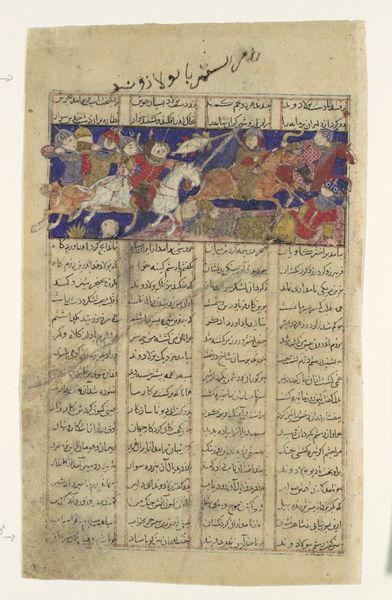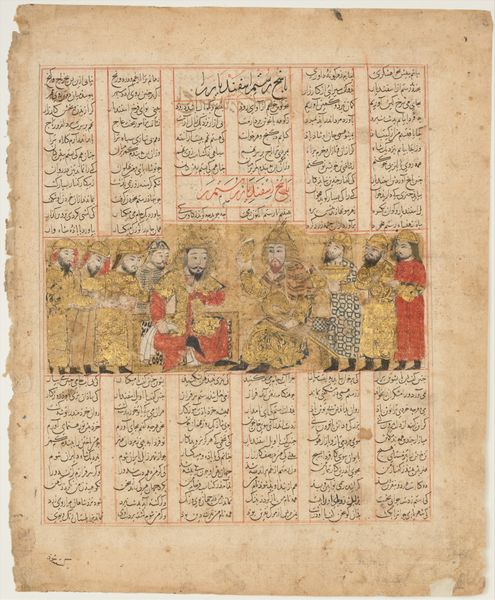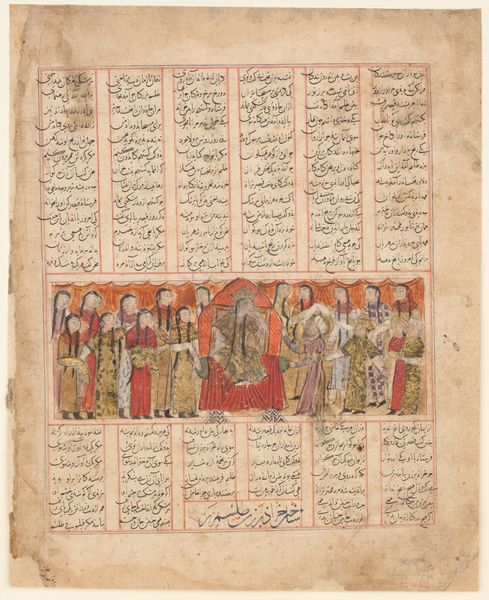
"Caesar Gives his Daughter Katayun to Gushtasp", Folio from a Shahnama (Book of Kings) of Firdausi 1305 - 1365
0:00
0:00
drawing, paper, watercolor, ink
#
portrait
#
drawing
#
water colours
#
narrative-art
#
sketch book
#
figuration
#
paper
#
personal sketchbook
#
watercolor
#
ink
#
coloured pencil
#
men
#
islamic-art
#
miniature
Dimensions: Painting: H. 1 15/16 in. (4.9 cm) W. 4 3/16 in. (10.6 cm) Page: H. 8 1/16 in. (20.5 cm) W. 5 5/16 in. (13.5 cm) Mat: H. 19 1/4 in. (48.9 cm) W. 14 1/4 in. (36.2 cm)
Copyright: Public Domain
Curator: Welcome. Today, we are looking at "Caesar Gives his Daughter Katayun to Gushtasp," a folio hailing from a Shahnama, or Book of Kings, by Firdausi. Created sometime between 1305 and 1365, this piece utilizes ink, watercolor, and paper, and it's held here at the Metropolitan Museum of Art. What's your immediate reaction? Editor: Hmm, muted drama. There's this incredible stillness, almost meditative, despite what I imagine is a significant moment being depicted. The subdued palette of watercolors really reinforces that sense of calm, even as figures gesture and presumably speak. Curator: I think you’re spot-on with that stillness. It's fascinating how the composition reinforces it. Notice the meticulous rows of text framing the central scene—they act almost as a kind of stabilizing border, like a form of imposed order. The calligraphic elements alone introduce a rhythm and pause from any action. Editor: Yes, the text, it's like a world surrounding the visual narrative. So, tell me more about the Shahnama and its significance, especially for context. Curator: Certainly. Firdausi’s Shahnama is Iran’s national epic, completed around 1010 AD. It recounts the mythical and historical past of Persia, from the creation of the world up to the Islamic conquest in the 7th century. This particular folio illustrates a pivotal moment: Caesar giving his daughter, Katayun, in marriage to Gushtasp. Editor: What do you see in their postures? The man seated under that architectural detail seems to be taking the scene very casually. Everyone else seems at least mildly engaged in what is happening. Curator: A sleepy witness! It could denote detachment or perhaps, more symbolically, fate predetermined—a future already written for the young couple, Katayun and Gushtasp. His slumbering form may indicate a passive acceptance of destiny's unfolding. This, remember, is but one interpretation, yet very powerful in visual delivery! Editor: The marriage signifies more than just personal union; it solidifies political ties and cultural exchange. Plus, that detailed rendering on their clothes, which strikes me as quite unique— Curator: Ah, those patterns and colors! Absolutely! Think of them as visual signifiers of status and identity, a kind of medieval bling, darling! And those architectural backgrounds aren't just settings. They’re subtle stagecraft elements that suggest specific cultural milieus or emotional landscapes. Editor: Well, delving into this piece makes one realize how every little nuance works together to convey complex layers of history, tradition, and symbolism—a masterful blending of text and image. Curator: Precisely. It serves as a reminder of how visual storytelling across cultures and centuries creates powerful narratives—a feast for both the eyes and mind, if I might add.
Comments
No comments
Be the first to comment and join the conversation on the ultimate creative platform.
